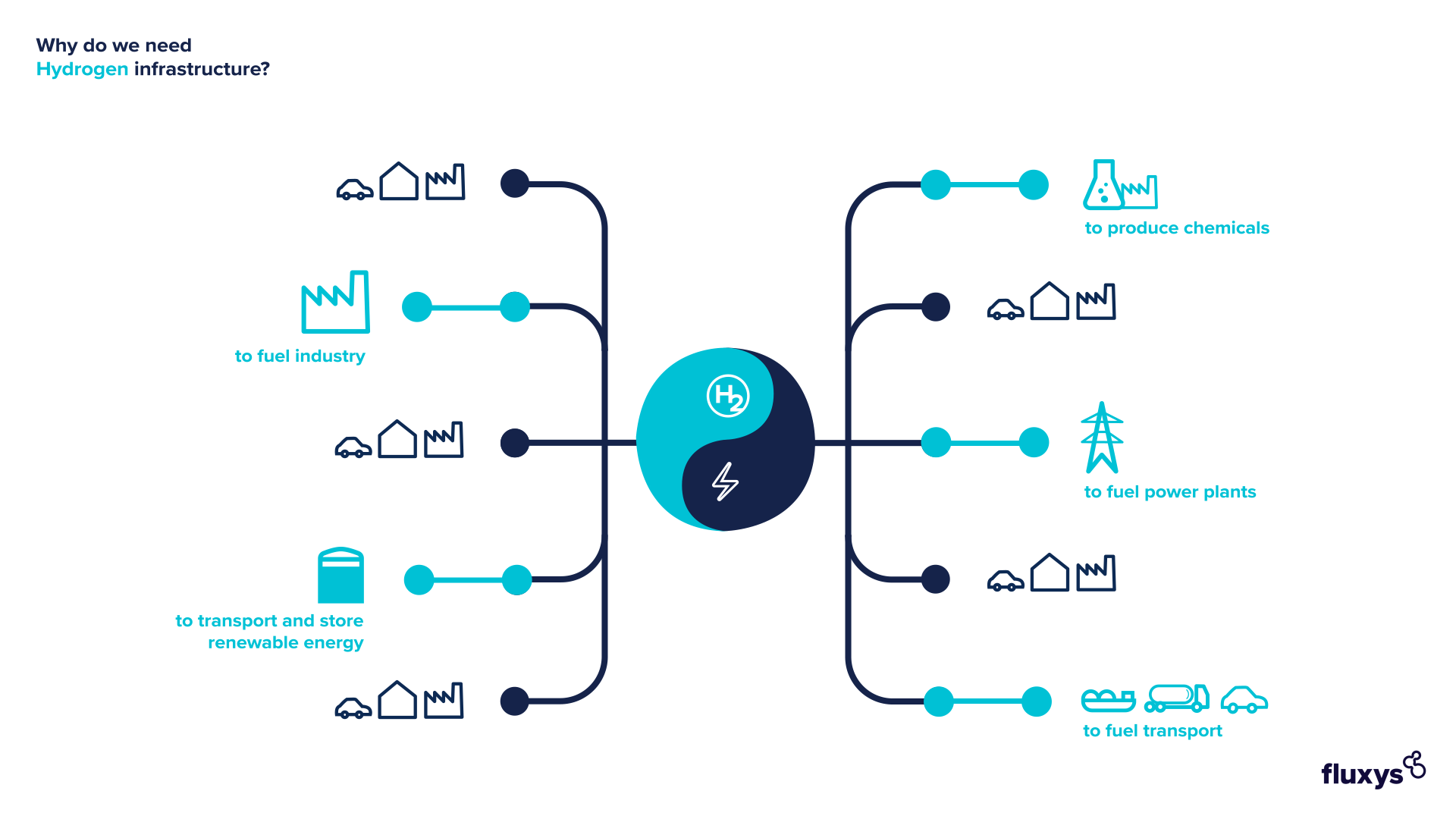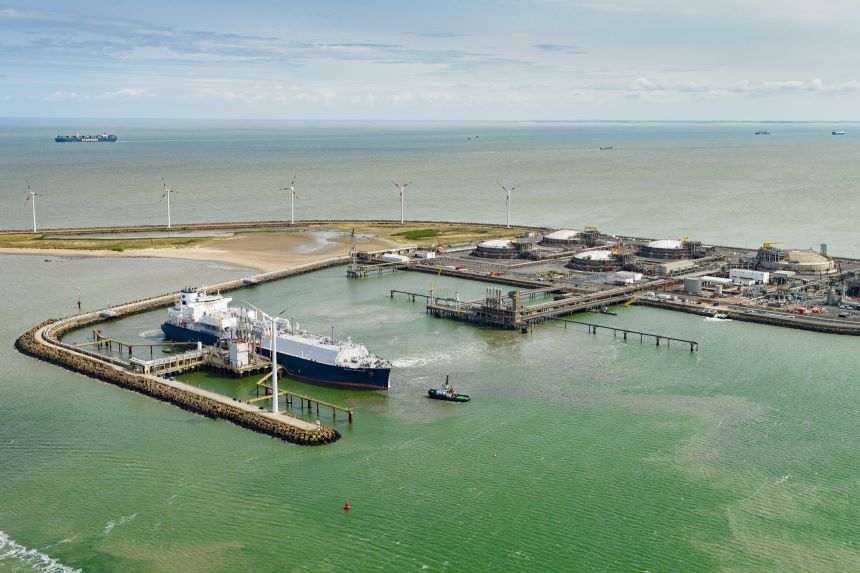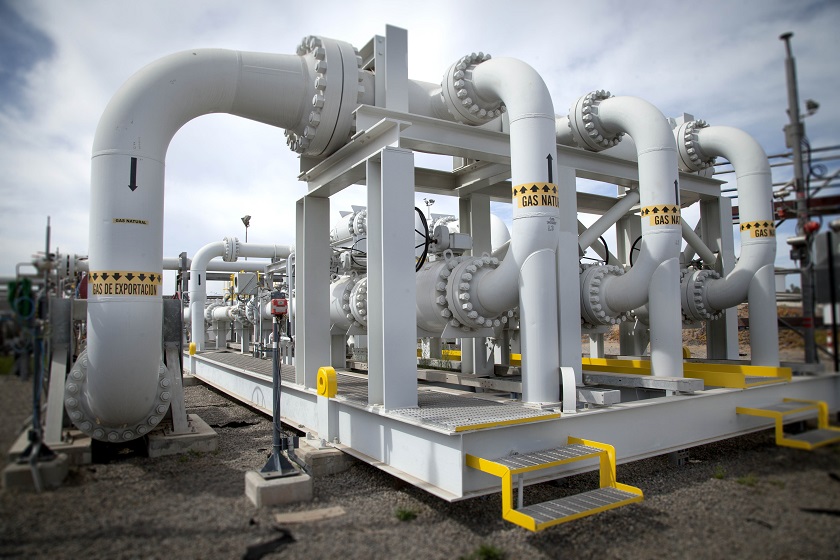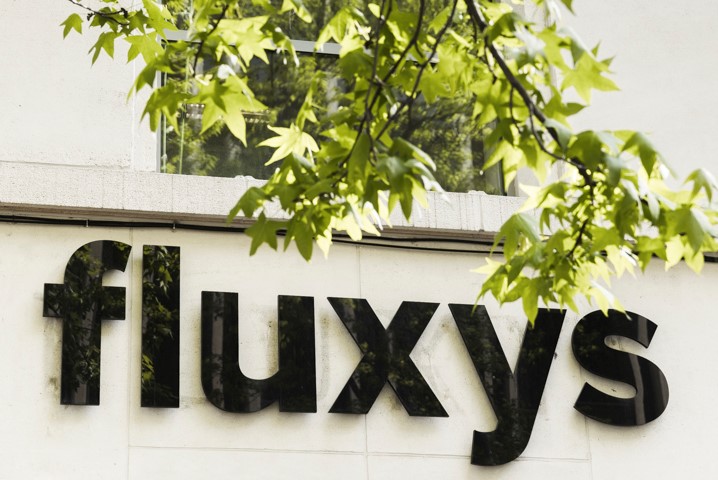Wasserstoff
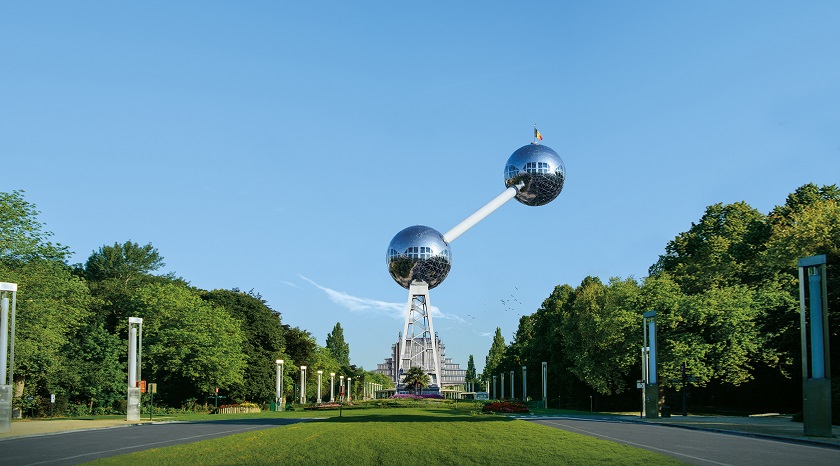
We are in the midst of an energy transition. The way we generate, transport and use energy will soon look completely different. Through our extensive and reliable network of pipelines, we bring hydrogen (H2) to industrial companies.
We want to offer the first hydrogen transport capacity by 2026, which is how we will help build, with our full conviction and commitment, a climate-neutral economy and society.
What is hydrogen?
Hydrogen is a molecule whose chemical formula is H2. It is the most common chemical element on earth and throughout the universe. There is more than enough of it, although the molecule is not found by itself in nature. Energy can be used to split hydrogen off from other molecules, such as water (H2O) and natural gas (CH4). Hydrogen is not an energy source, but rather an energy carrier, in other words a substance in which energy is stored. That energy is released during combustion.
The properties and colours of hydrogen
While hydrogen itself is an odourless and colourless gas, we nevertheless use different colours to indicate how the hydrogen was produced and whether or not any CO2 greenhouse gas was released during the production process.
In order to use hydrogen, it must first be produced. This requires energy. Hydrogen absorbs a part of that energy.
The production of blue and green hydrogen is a process with respectively little to zero carbon emissions.
Hydrogen can be made from nothing more than water and green electricity generated by windmills, hydropower and solar cells. When the water molecule is exposed to a high power in an electrical (electrolytic) cell the hydrogen portion splits off from the oxygen. The oxygen can be discharged harmlessly or collected and sold. And we keep the perfect fuel: hydrogen. As it is carbon-free, it is also called green hydrogen. If the electrolysis is done with electricity from nuclear power plants, we call it pink or purple hydrogen.
When the hydrogen is made with a fossil fuel like gas or oil, then carbon is released during production. The proven technology CCS (Carbon Capture & Storage) captures more than 95% of the carbon emitted during the production of blue hydrogen. Hydrogen production in which the carbon is not captured, is called grey hydrogen. In the short term, blue hydrogen will help develop the hydrogen economy and take the first big steps towards reducing carbon emissions.
Towards a climate-neutral economy
Fossil fuels such as coal, oil and natural gas have created enormous prosperity, but burning them releases huge amounts of CO2 into the atmosphere. An energy transition is essential if we are to stop global warming and climate change.We will replace fossil fuels with energy sources that do not produce greenhouse gases, such as solar and wind power. Electrification of, among other things, cars and heat pumps with renewable energy will play a crucial role here.
But electrification alone will not get us there.

Why is hydrogen necessary?
Renewable energy, such as sun and wind, is not available in unlimited quantities. As the European Commission's projections for 2050 show, a net-zero energy system is likely to be built on carbon-neutral electricity and carbon-neutral molecules such as hydrogen, biomethane, synthetic methane and biofuels.
As companies seek to strike a balance between security of supply, climate impact and cost price, hydrogen often emerges as the best option. In addition, there are industrial processes for which electrification is not an option. For example, the cement and steel industries use coal and natural gas to heat blast furnaces. This is not possible with electricity, but it is possible with hydrogen. This makes hydrogen an important link on the path towards a climate-neutral economy.
Diversity is the key to the energy future – both green electricity and carbon-neutral molecules in their various forms. This means electrification with green power where possible and clean molecules where this is more appropriate, taking into account cost, security of supply and the reduction of CO2 emissions.
How does hydrogen reduce industry’s CO2 emissions?
CO2 emissions must be drastically reduced, including in industry. Fortunately, there are solutions. Hydrogen has clear potential for enabling industrial companies to transform production processes and make them climate-neutral.
Towards climate-neutral industry
For such a small country, Belgium has a large industrial sector. Many large industrial players are active here and create local employment and prosperity. At the same time, industry is responsible for 40% of Belgium's CO2 emissions, which is why companies are launching all kinds of initiatives and innovations to reduce their emissions. These efforts include upgrading machinery and equipment, optimising production processes, insulating buildings and so on. These investments have a positive impact on the climate and on companies’ expenditure: their energy bills will go down and fewer emissions will also mean they spend less money on emission rights per million tonnes of CO2 emitted.
The inevitable (process-related) CO2 still emitted by heavy industry will be captured and stored or reused. This is how companies reduce CO2 emissions on a large scale.

Europe all in on the hydrogen economy
With Fit For 55, the European Commission is working towards 55% CO2 reduction in all 27 Member States by 2030. And with the European Green Deal, the goal is to make Europe the first climate-neutral continent by 2050.
How will we do that? Hydrogen plays a key role in the European roadmap for achieving both goals. The European strategy aims to build an entire ecosystem around hydrogen, so that industry can adapt accordingly, the EU can hit its climate targets and Europe's energy security can be enhanced.
Major steps forward in research and innovation
The energy transition is in full swing; we don't have time to sit back and relax. Today, hydrogen from natural gas is still cheaper than CO2-neutral hydrogen. Studies by the International Energy Agency show that the price of clean hydrogen can fall quickly and sharply.
Solar and wind power are getting cheaper all the time. Companies and governments worldwide are investing millions in research and infrastructure to rapidly expand the hydrogen economy. In addition, CO2 emissions are growing more expensive year after year via the European Union's Emissions Trading System. For industrial companies, the bill for emission allowances can amount to billions of euros per year. All this makes it economically interesting to jump on the hydrogen train.
At Fluxys we are not standing still either. How do we get hydrogen from the producer to the consumer? How do we future-proof our existing network by enabling to transport this molecule? We are helping build the hydrogen economy. By 2026, our first pipelines will be ready to transport hydrogen. This is the first step in our aim of establishing connections between industrial zones as well as implementing connections with neighbouring countries.
